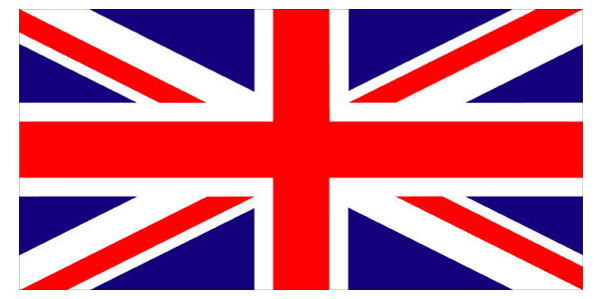 |
|||
| Train Traffic | |||
|
|
|
 |
|
|
|||
|
|
|||
|
|
|||
|
|
|||
|
|
|||
|
|
|||
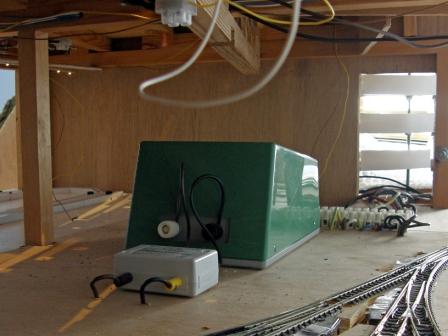 |
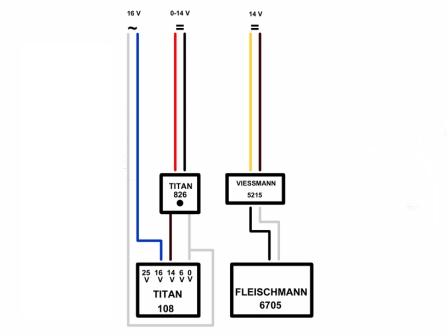 |
||
|
|
The wiring of the layout is analog. A Titan 108 transformer
is installed in the helix. To this is connected an 826 electronic
regulator to run the trains. The turnouts and the uncouplers are
also supplied by the 108. Underneath the station is a Fleischmann
6705 transformer. Behind was wired a Viessmann 5215 item. Thus the
alternative current is altered into direct current. Herewith
are supplied lamps and other functional items. So far 21 Fleischmann
and 2 Minitrix turnouts have been installed. All turnouts have
metallic hearts and all motors have been turned around. They are
connected to Fleischmann 6900 switches on 2 track diagram consoles (D1). Underneath
the station and the brewery are storage tracks for 9 trains. Every
train has its own parking marked by a drawing.
|
||
| to the top | |||
 |
|
||
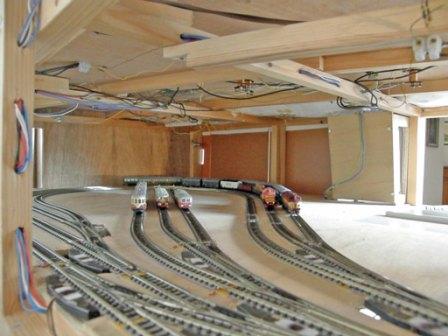 |
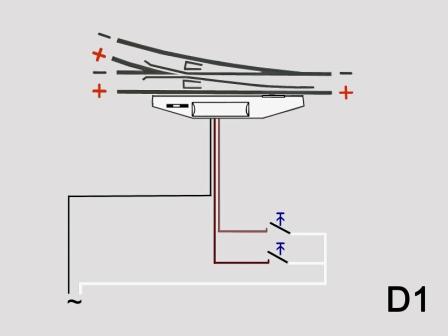 |
||
| to the top | |||
|
On the small branch line there is always only one
train on the move. The stop turnout results from removing the wire
bridges and installing plastic rail joiners about 25 cm behind the
heart (D2, D3).
Thus the locomotives stop, when the turnout is in the wrong
position. For ballasted turnuts I install a rail joiner with a
soldered wire behind the heart. It so becomes possible to provide it with current by a relay . It may happen, that the
switch built inside the turnout oxidizes or that
the contact springs wear out with the years (D4). Everywhere on the
layout, I use interrupt switches to stop the locomotives at the
chosen places (D5).
|
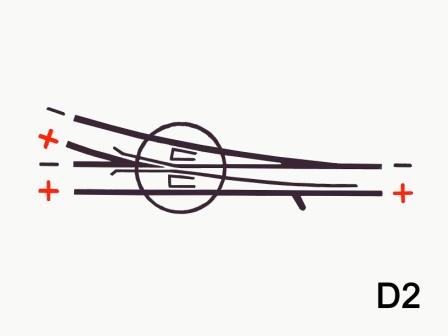 |
||
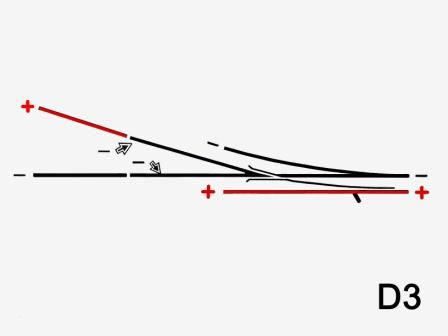 |
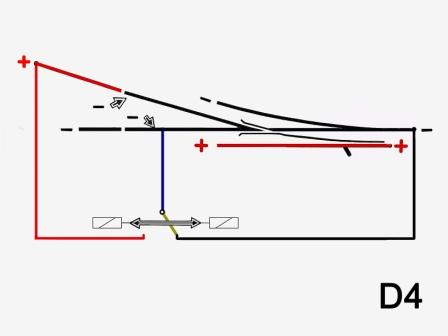 |
||
| to the top | |||
|
|
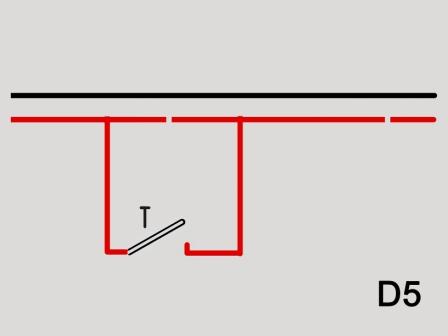 |
||
|
|
The reverse loop is connected to 4 Fleischmann
6950 diodes and dvided up by 6 plastic rail joiners. It can only be
driven trough in one direction. Moreover the trains stop until the
polarity has been reversed (D6). Diodes have also been connected to
the dull tracks in the storage station, so that the vehicles do not
bump into the buffers (D7). For the shunting 10 Herkat uncouplers
have been installed. They are operated by moment switches (D8).
Trains run from the terminus station to the parking station, where
thy can rotate in the reverse loop. Should all the segments once
been constructed, the vehicles may drive one or several rounds in
the circle.
|
||
| to the top | |||
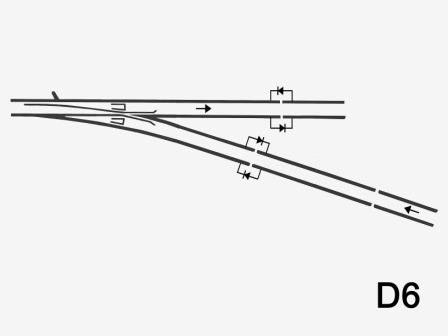 |
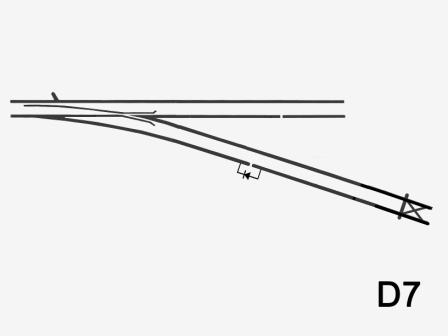 |
||
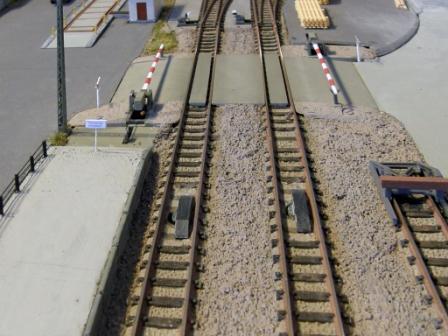 |
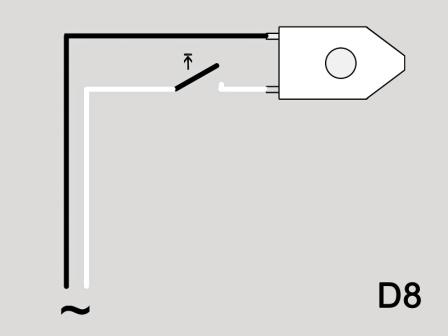 |
||
| to the top | |||
|
Good contact is essential for the gaming operation.
At every engine I changed the wheels with tires against metallic ones.
They are cleaned in regular intervals. Moreover, the rails and the
turnout hearts are manually cleaned after a gaming break. An
original Fleischmann 833403, an original Minitrix 51202000, a Minitrix 51202000
equipped with a double plug on the roof, an altered
Lux 9060 and a Roco 25093 altered to System Jörger form a track cleaning
train. Once a month I lay a kitchen paper with Roboto spécial on a long
straight track and push the wagons across by hand . The dirt from the
wheels is thereafter on the paper.
|
|
||
|
|
|
||
| to the top | |||
|
|
|
||
|
|
The layout acts at the end of the sixties.
Passenger traffic needs trains for:
- Workers needing to join the steelmills. - Clerks and employees joining the capital. - Pupils attending a nearby grammar school. - Poeple looking for connection to the northern line (to Liège and farther). Freight trains transport parcelled goods, wood, coal, building materials, agricultural machines, fertilizers and fresh products for hotels. The brewery needs wagons for the beer transport. The fuel oil for the brewery house and the diesel for the lorries are also deliverd by rail. An imaginary timetable (to click on) provides great fun. |
||
| to the top | |||
|
|
|
||
| to the top |
|
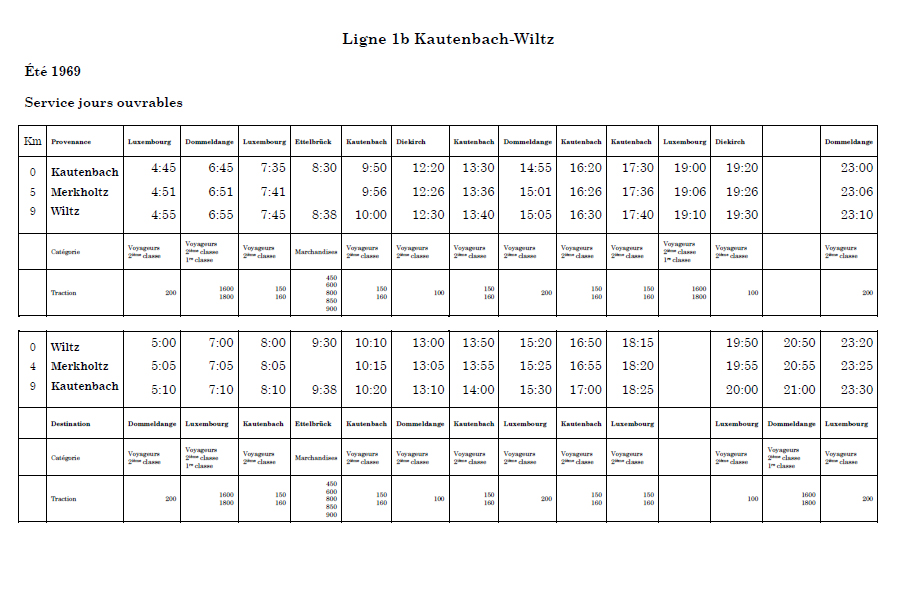 |
|